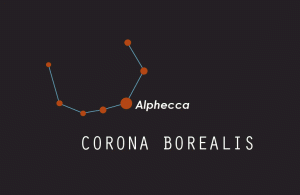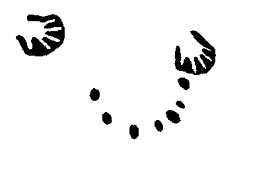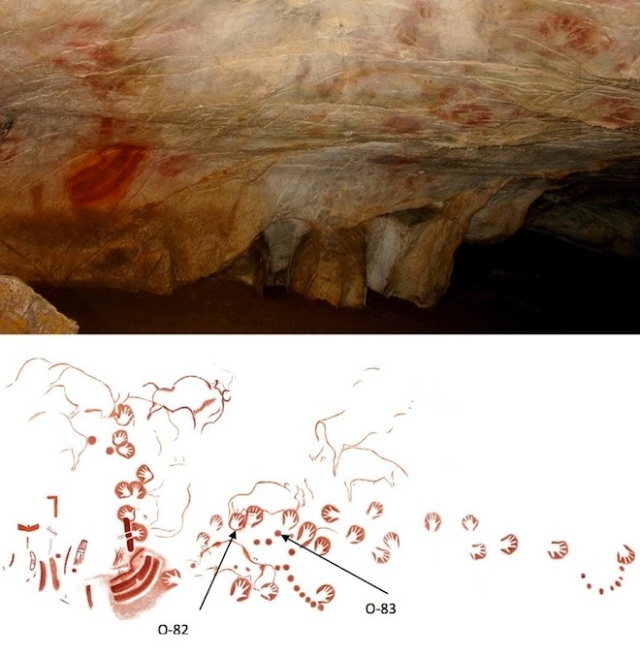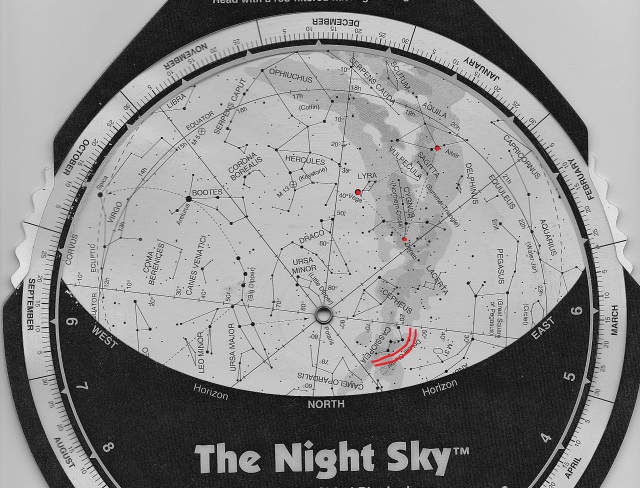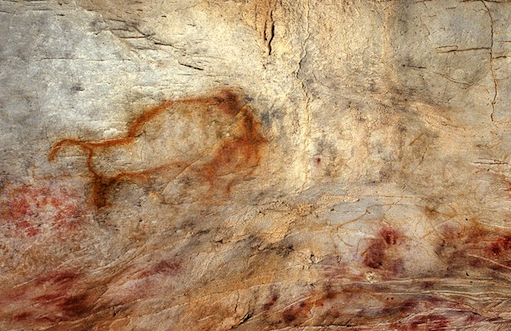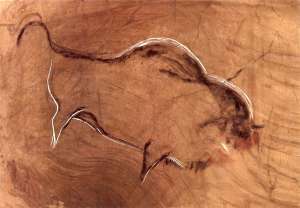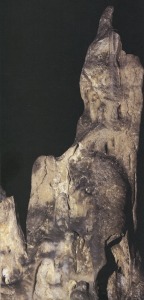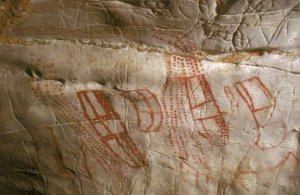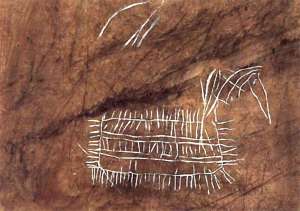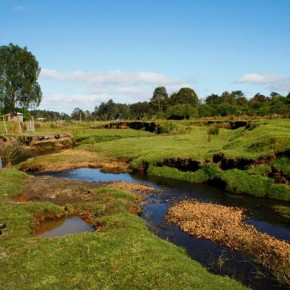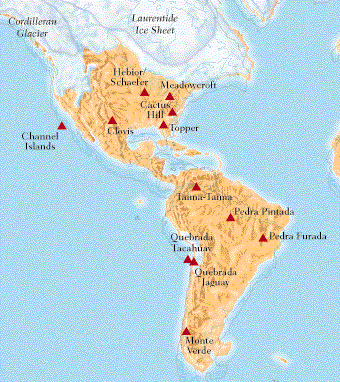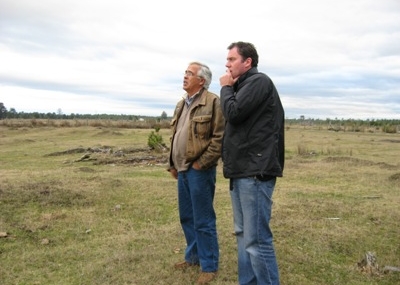The Winter Solstice in the Northern Hemisphere is December 21 this year, the shortest day and longest night of the year. (For those in the Southern Hemisphere, it’s the Summer Solstice and the longest day of the year.)
What is a Solstice?
If you note the spot where the sun rises each day for a year, you’ll see it moves along the eastern horizon until it reaches its farthest point (the solstice or sun-stop) before it seems to turn around and move back toward the center (the equinox). For a more complete explanation, see the earlier post on Solstice and Equinox.

The Winter Solstice is an important event for those of us who hate the very brief daylight and early darkness of late fall days because we know all that will start to change after the Winter Solstice. The days will start to get longer, the nights shorter. We’ll be on the upswing, even if the day to day change is slight.
This moment of change is so important it’s often marked by rituals and lights. The Hindu festival of Diwali features lights, candles, fireworks, prayers, treats and sweets.
The Jewish festival of Chanukah (Hanukkah) involves songs, prayers, special foods, good fellowship, and of course, the lighting of the candles on the menorah one by one over the course of eight days. The bronze menorah pictured features a Tree of Life design inspired by the African Acacia tree, an interesting combination of themes.
Perhaps the best-known post-Winter Solstice celebration is Christmas, but it is a complicated holiday and season. In some ways, it’s about the birth of Jesus. In others, it’s more a commercial and social event, one sewn together out of dozens of cultural patches from different times and regions.
Two main influences have shaped our thoughts about the Winter Solstice and Christmas: the Mediterranean and ancient Near East, especially the Roman Empire and the early Catholic Church, and the Nordic traditions of Yule.
In the Mediterranean world and the Ancient Near East
The greatest power in the Ancient Near East about 500 BC was the Persian Empire. It stretched from the Black Sea to the Red Sea to the Persian Gulf. After Alexander the Great, originally from Macedonia in Greece, defeated the Persian King Darius, Alexander became the new King and, by 323 BC, extended the empire’s reach from Greece to India, over two million square miles! Alexander sought to combine elements of Greek, Middle Eastern, and Persian culture.
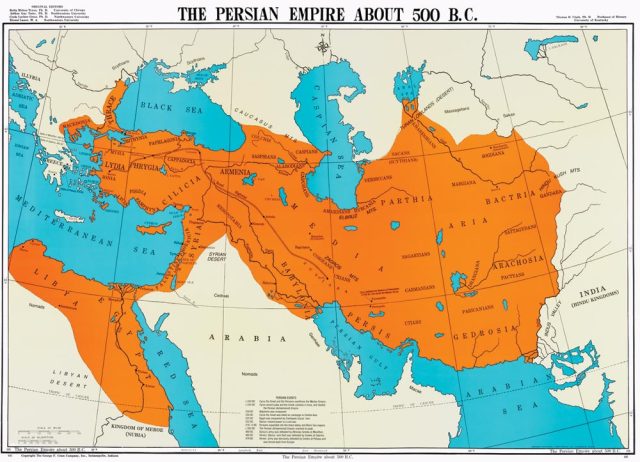
After Alexander’s death, the empire fell apart, but his efforts to spread Greek culture ushered in the Hellenistic period, which lasted over two hundred years and had a lasting influence on Western civilization. Alexander coin, below. Note his interesting headdress.
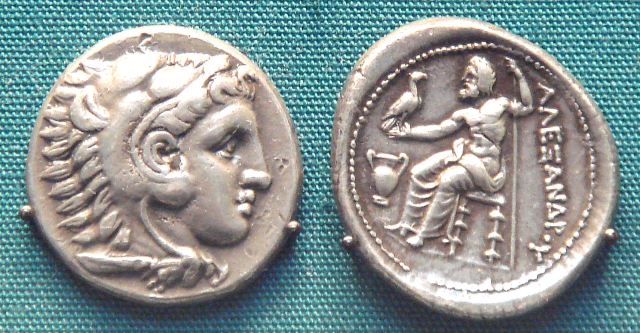
When the Roman Empire conquered Greece, about 146 BC, it incorporated many parts of Greek culture, as well as some elements of Persian culture that Alexander had introduced. When the Roman Empire conquered new lands (See map, below), their armies spread those cultural elements as well.
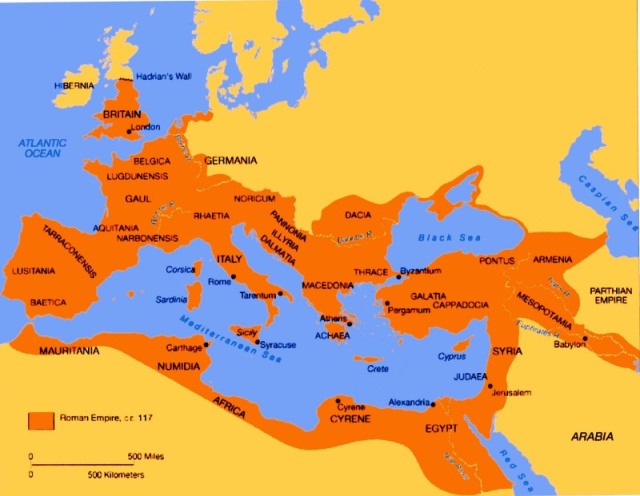
One interesting element of Persian culture spread by the Roman army was Mithraism, a mysterious men-only cult that involved worship of the sun as Mithra, complex initiations, a strict hierarchy of power, and absolute loyalty to the ruler.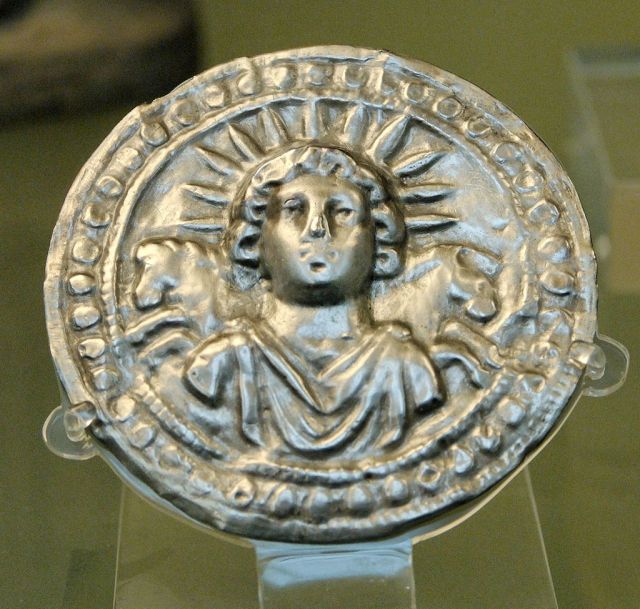
Even after the cult’s popularity faded, Emperor Diocletian dedicated an altar to Mithras (pictured above) as patron of the Roman Empire. In 80 AD, an altar to Sol Invictus (The Unconquered Sun) in Rome carried the inscription “The Unconquered Sun Mithra.” In a mosaic, Mithra-Sol appears in a chariot drawn across the sky by four horses, as he makes the sun rise and set. He is generally shown with a halo around his head, or a crown of rays, like the sun.
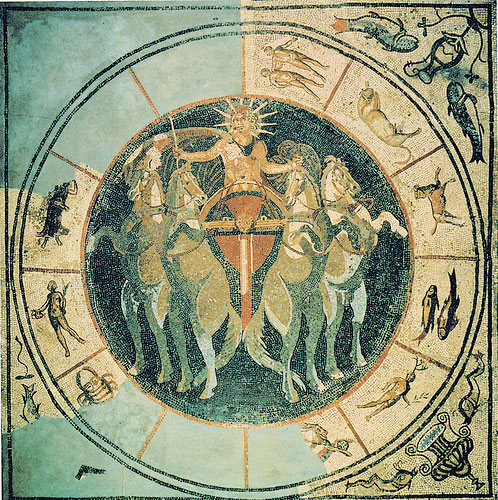
How does all of this about Mithra/Sol Invictus relate to those of us anxiously awaiting the Winter Solstice? The biggest day of the year for followers of Mithra was December 25, when it was clear that the sun was once again growing in strength. The priests of Mithra, called Magi, studied the stars for signs. (They show up in a later story.)
Today, the Iranian festival Shab-e Yalda (“The Night of Birth”) carries on the tradition of gathering together with friends and family to ward off the darkness of the longest night and then celebrate the triumph of Mithra, the Sun God, over darkness.
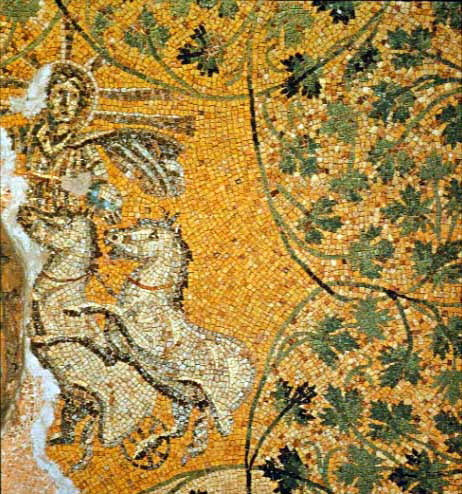
Interestingly, Sol/Helios, with halo, is sometimes pictured in a golden chariot being pulled by four horses. A 3rd century AD mosaic of Sol Invictus still lies in a necropolis (place of the dead) underneath Saint Peter’s Basilica in Rome. Some now interpret it as the sun-god Helios/Sol Invictus/Jesus Christ. (Mosaic pictured, left)
Saturnalia
The Romans later morphed the December 25 “dies soli invicti nati” (the birthday of the unconquered sun) into a week-long wild party called Saturnalia, dedicated to Saturn, the god of agriculture, liberation, and time. During the festival, which dates back at least as far as 217 BC, Romans decorated their houses with greenery and candles, gave gifts to children, and enjoyed good food, drink, sex, some gambling and fighting – all the regular party elements. With work suspended and lots to celebrate, it was the most popular of the Roman festivals. (Saturn in his chariot, below. Yes, there is a similarity.)
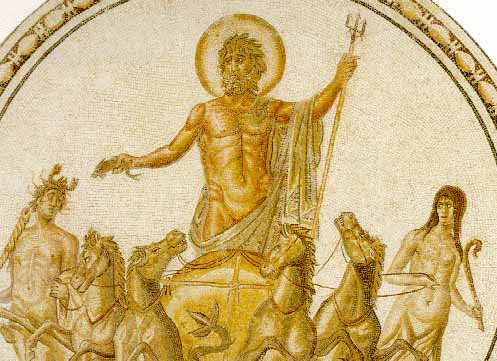
Indeed, the festival remained popular long after Emperor Constantine ended the persecution of Christians, (312 AD), converted to Christianity, banned Saturnalia and other “pagan” festivals, and made Christianity the official religion of the Roman Empire.
When Catholic Church officials realized they couldn’t eradicate Saturnalia, they co-opted it, making it the celebration of the birth of Jesus. No one knew the actual date of Jesus’s birth, so it was a perfect date for a celebration of new birth and the triumph of light over darkness.
Art
Though the Roman Empire had a new official religion, it maintained many of the older customs, not just in terms of festivals. Important figures, formerly seen as gods and goddesses, were now presented as Jesus and His particularly notable followers. Through their pure faith and ability to inspire others, they became known as saints. In Christian artwork, they were often marked by a halo, a golden orb around the head very much like the sun orb around the head of Sol/Mithra and the orbs surrounding Hindu and Buddhist holy people.
![]()

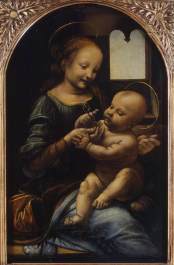
When Jesus appeared in a painting or sculpture with other holy people, his halo often had rays as well as the orb, in keeping with the Mithraic sense of rank.
The Benoit Madonna, or Madonna with Flowers, one of Leonardo da Vinci’s early paintings (on the far right), shows subtle floating halos around the heads of the Madonna and Child. However, the more modern stained glass image of Jesus shows a full rayed halo reminiscent of the older image in the mosaic (left) and the image of Alexander on the coin.
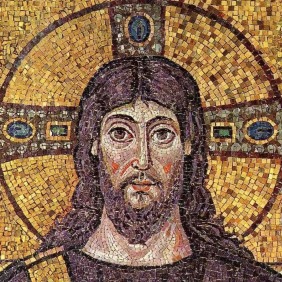

Saint Nicholas
Saint Nicholas was a bishop in Myra (modern-day Turkey) in the 4th century AD, who was known for his strict defense of the Christian faith and his generous gift-giving. He was said to have given gifts to poor children and secretly provided the dowry money to keep three sisters out of a life of prostitution.![]()
The icon show his serious demeanor, as well as his halo. The painting by Gentile da Fabriano, made a thousand years after Saint Nicholas’s death, shows him sneaking up the side of a building so he can throw bundles of money inside.
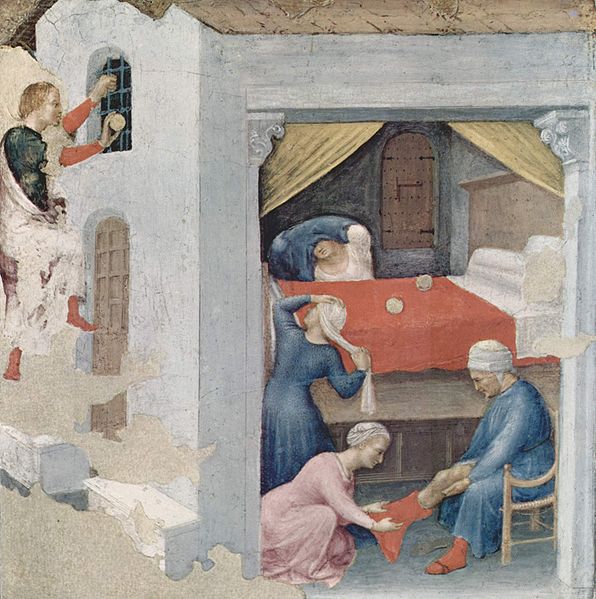
The Nordic Connection
Meanwhile, in Scandinavia, the Juul (Yule) celebration before, during, and after the Winter Solstice included feasting, fighting, drinking, and merrymaking, as well as lots of fire, heat, and light to encourage the return of the sun.
In Norse mythology, the wolf, a symbol of darkness and destruction, is always chasing the goddess of light. At the Winter Solstice, she is at her most vulnerable. Yet the epic Edda says after she is killed and eaten, she is reborn out of the belly of the wolf. Just as she will always be consumed by darkness, she will always return. So the Winter Solstice Yule is a celebration of the interplay of death and rebirth.

Like holly, the evergreen tree was a Norse symbol of immortality because it didn’t lose its leaves and turn brown, even after all the other plants did. Therefore, it had special powers. Vikings used holly leaves and berries to make circular wreaths to decorate their houses. To some people, trees were homes of the spirits, so they decorated evergreen trees in winter with charms and offerings.
The Yule log was burned in honor of the Norse god, Thor, the protector of Earth (Midgard). A piece of the giant log was kept for good luck and as kindling for the following year’s fire.
The picture here shows a log in a hearth, but really a Yule log should be giant and the hearth that can hold it should also be giant, so that, for a moment at least, it can drive away all thoughts of the dark and the cold.
Thor
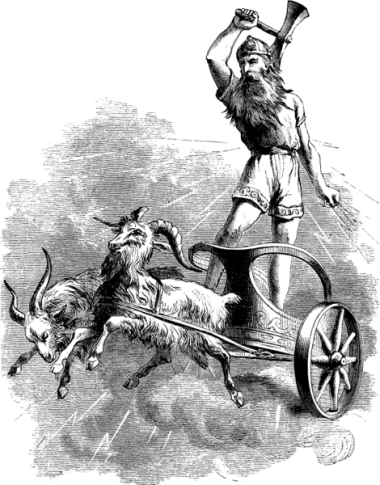
Unlike the Thor of the Marvel comics and movies, Thor in Nordic legends traveled the skies in a magic chariot drawn by two goats. Sometimes he killed and ate the goats, but they would always be reborn the next day – a perfect symbol for the Winter Solstice sun dying one day and being reborn the next. The goat became a symbol of Thor. Today, the Yule Goat is the most common holiday decoration in Scandinavian countries.
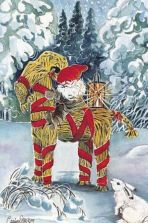
In some holiday images, elves drive a sleigh pulled by one goat, or several, so they can deliver gifts to children.

The Dark Side
Ancient Norse folk beliefs also included dark, scary figures: the Yule Riders of Norwegian folklore, dangerous creatures of the Underworld; Lussi, who would steal children away into her dark world, Icelandic trolls and the Yule Lads, who live in the mountains with their terrifying ogress mother Gryla and her cat, which eats children.
Krampus
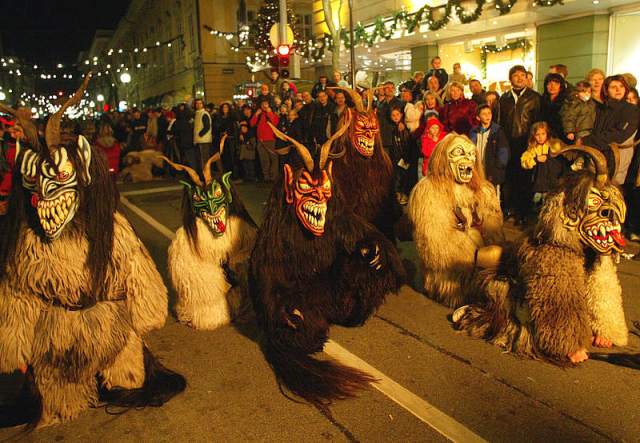
Norse and Germanic folklore also gave us Krampus, the Christmas devil who shows up on December 6, which is also the feast day of Saint Nicholas, but Krampus is not carrying gifts. He’s carrying a rod with which he can beat wicked children. He looks truly terrifying. Oddly enough, he’s enjoying a resurgence in popularity these days, especially in Austria and Germany. The photo included is from this year’s festival. Some parents take their children to meet Krampus and be terrified. Maybe it’s supposed to scare them into better behavior. The main legacy of Krampus, though, seems to be the idea that someone is keeping tabs on your behavior, and you’ll be rewarded with gifts if you’ve been good, but be punished if you’ve been bad.
Mistletoe
 Thank the Celtic Druids for the mistletoe you hang in the parlor. Mistletoe, a semi-parasitic plant that grows on willow, apple and oak trees, was long considered a magical, medicinal, and sacred plant that should be gathered at the Summer or Winter Solstice. People often pinned a sprig of mistletoe over the door to ward off evil spirits and encourage goodwill. Interestingly, mistletoe was incorporated into many Saturnalia celebrations as a fertility symbol.
Thank the Celtic Druids for the mistletoe you hang in the parlor. Mistletoe, a semi-parasitic plant that grows on willow, apple and oak trees, was long considered a magical, medicinal, and sacred plant that should be gathered at the Summer or Winter Solstice. People often pinned a sprig of mistletoe over the door to ward off evil spirits and encourage goodwill. Interestingly, mistletoe was incorporated into many Saturnalia celebrations as a fertility symbol.
Old Man Winter/Father Christmas/Sinterklaas/Santa Claus
The Nordic Yule Goat at one time brought children gifts. Other pre-Santa Nordic figures include Old Man Winter and Father Christmas.
Father Christmas was pictured as an old man with a long beard, very often dressed in embroidered cloth or furs and carrying a cut evergreen tree or perhaps wearing a wreath of holly. He might still carry a switch to punish bad children. Sometimes he rode a goat.
The antique Christmas card pictured below shows Father Christmas carrying a cut evergreen tree, toys, and the baby Jesus, who has a rayed halo, an interesting mix of cultural images.

Sinterklass was the Dutch version of Saint Nicholas/Father Christmas. A serious old man sporting a full beard and fine red robes, he kept a book in which he recorded whether each child had been good or bad. He would deliver gifts to good children and a broom made of willow branches to spank bad children.
The Trouble with Christmas
People from all over the globe came to the New World and brought their native customs about the Solstice and Christmas with them. However, these customs were not always welcomed. The Puritans and other conservative Christian sects hated Christmas, claiming it was little more than a pagan celebration with a Christian veneer.
Worse than that, by 1800, Winter Solstice/Christmas celebrations in the US had become wild, rowdy affairs noted for public drunkenness, aggressive begging, and destruction. The common practice of demanding food and drink from the rich (which later turned into the tamer “Wassailing”) sometimes ended in gangs threatening to destroy a house if not offered the finest food and ale.

Stephen Nissenbaum describes the problem in his fine book, The Battle for Christmas. There were two camps in the eastern US in 1800: those who wanted the wild Solstice/Harvest party like the one pictured, and those who wanted something gentler, kinder, and more religious. In 1809, partially in response to these problems, Washington Irving published Knickerbocker’s History of New York, in which the narrator claims to remember the old customs associated with Christmas, particularly those of the early Dutch settlers in New York. He describes Saint Nicholas’s wagon, his pipe, and his gifts, and the great customs of visiting family and friends, sharing good food and drink, as well as games. It’s a fine, civilized picture.
In 1810, John Pitard paid for the publication of a pamphlet featuring a picture of Saint Nicholas bringing gifts like toys, oranges, and candy to good children.
In 1821, William Gilley published a poem called “Old Santeclaus with Much Delight,” which includes many of the features we’ve come to expect of Santa: the red outfit, the appearance on Christmas Eve, and the presents for good children. For naughty children, he leaves a birch rod so parents can beat the offending little ones. And the poem is the first to mention reindeer pulling the magic sleigh, rather than goats. 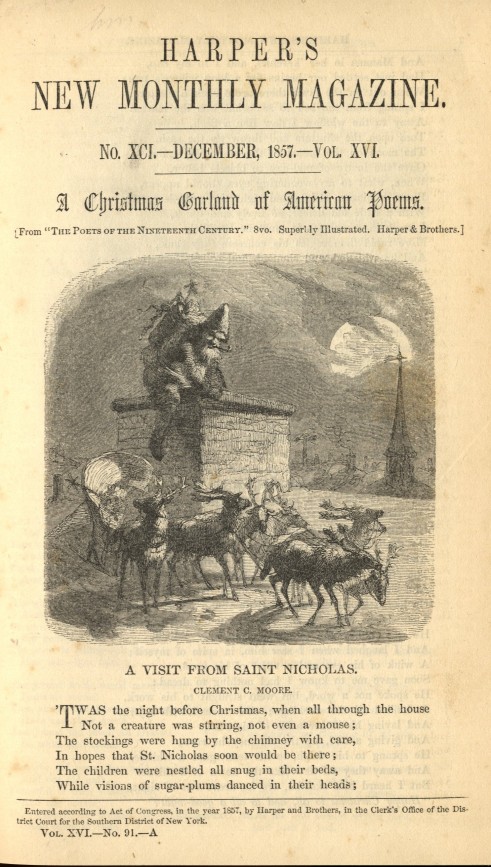
“A Visit from St. Nicholas”
This poem, published in 1823, also called by its first line, “’Twas the night before Christmas,” did the most to change the figure of Saint Nicholas into what we know as Santa Claus. Though the main character is called Saint Nicholas in the poem, he’s not the 4th century Turkish bishop, the stern authority figure of the early Church. He’s now good ol’ Saint Nick, dressed in fur that was covered in soot. “He look’d like a peddler just opening his pack.” His eyes twinkle. He has a broad face and a round belly. He’s “chubby and plump, a right jolly old elf.” He has lost his halo and his bishop’s robes. He no longer has dark hair, dark eyes, and a stern face. In the 1857 Harper’s version, he’s seen climbing down the chimney while his magic flying reindeer/deer wait for him.
Moore’s Santa is much kinder than Sinterklaas or Santeclaus. He’s a jolly old elf like those of Norse lore, even though he doesn’t look much like an elf. He doesn’t leave birch rods, only presents. He winks at the viewer/narrator before he heads back up the chimney, as if they’re both in on a wonderful joke. And he wishes a Happy Christmas to ALL. He’s Father Christmas without all the dark stuff.
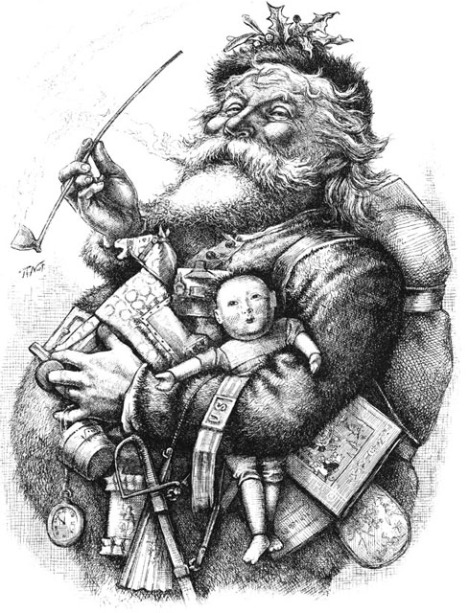
The Thomas Nast illustration shown makes Santa really fat. He’s a figure of plenty. He brings gifts to children. He lives in the North Pole and has a workshop run by elves. And he’s wildly popular. But he’s not overtly religious. He has a sprig of holly in his cap and a knowing twinkle in his eye. He now carries a long clay pipe, the type fancied by the wealthy. His cheeks look pretty flushed. He carries so many toys he can barely keep hold of them all. He’s an odd relative of the severe saint he’s named after and the Father Christmas figures who preceded him. Mostly, he’s shown riding on his magical sleigh while he brings presents to children on Christmas Eve. Interestingly, in the card pictured below, he has an American flag on his pink sleigh. Make that two. Does this mean Santa only delivers in the USA?

Through the early 1900s, the Nast version of Santa co-existed with the more gaunt or elfin figures of Father Christmas.
Then, in 1931, Coca-Cola asked Haddon Sundblom to design an image of Santa for their ads. Sundblom’s painting clearly uses the Nast figure of Santa as a model. He’s not an olive-skinned Turk. He’s a blue-eyed, ruddy-cheeked, jolly fat man who sports the red outfit with fur trim on the cuffs. Sundblom’s Santa was so popular, the artist went on to paint Santa ads for Coke for the next 32 years!
So, out of the Solstice, Saturnalia, Mithra, Sol Invictus, Saint Nicholas, Old Man Winter, Father Christmas, Thor, elves, Yule, and good old American commercialism, we end up with something that has parts of all of them and yet turns into something a little less than the sum of those parts. Santa is pleasant and acceptable to many, but in the end, it’s quite a bland image, especially now that it’s been stripped of its ethnic, spiritual, and magical associations. Today he’s used to peddle cars and power drills and soft drinks. He works in malls and shows up at various events around town before Christmas. Children are encouraged to sit in his lap and make wishes/demands.

Who is this man with the fake beard and strange outfit? He’s meant to be the figure he never quite manages to be: the Santa in Miracle on 34th Street (1947), in which Edmund Gwenn, as Kris Kringle, convinces young Susan, played by Natalie Wood, and her doubting mother, played by Maureen O’Hara, that Santa Claus really does exist.
That Santa Claus is the personification of a fond memory, a wish for something magical.
Every year, I hear about people who are upset because they think holiday lights and candles and evergreens and mistletoe are “pagan” and therefore evil. But they’re just elements of the past that belongs to all of us. Time didn’t begin with the birth of Jesus. Indeed, He followed customs and rituals of His Jewish ancestors. When we decorate an evergreen tree with lights and hang mistletoe, we are simply giving a nod to our amazing – and complicated – collective past.
Happy Winter Solstice! Happy Hanukkah! Merry Christmas!
Sources and interesting reading:
Bagot, Neil, “Yule – A Merry Viking Christmas?” Viking Slots, 19 December 2014, https://www.vikingslots.com/blog/yule-viking-christmas
Basu, Tanya. “Who is Krampus? Explaining the Horrific Christmas Devil,” National Geographic News, 1 December 2017 https://news.nationalgeographic.com/news/2013/12/131217-krampus-christmas-santa-devil/
“Coca-Cola didn’t invent Santa – but they did change Christmas as we know it,” The Aps Group, https://www.theapsgroup.com/coca-cola-didnt-invent-santa-change-christmas-know/
Eldridge, Allison. “7 Winter Solstice Celebrations From Around the World,” Britannica.com, https://www.britannica.com/list/7-winter-solstice-celebrations
Fox, Selena, “Celebrating Winter Solstice,” Circle Sanctuary, 2017.
Galloway, Laura, “How Santa Got His Reindeer,” CNN, 223 December 2012, http://www.cnn.com/2012/12/22/opiion/galloway-reindeer/index.html
Harris, Kathleen, “How Joulupukki, the Finnish Santa, went from naughty to nice,” Ink Tank, 22 December 2015. http://inktank.fi/how-joulupukki-the-finnish-santa-went-from-naughty-to-nice/
“Halo (Religious Iconography)” Wikipedia. https://en.wikipedia.org/wiki/Halo_%28religious_iconography%29
Handwerk, Brian, “Saint Nicholas to Santa: The Surprising Origins of Mr. Claus,” National Geographic News, 29 November 2017, https://new.nationalgeographic.com/news/2013/12/131219-santa-claus-origin-history-christmas-facts-st-nicholas/
“Holidays and Traditions around the December solstice,” Time and Date AS, 1995 – 2017. Timeanddate.com
“Icelandic Folklore,” Iceland Travel. https://www.icelandtravel.is/about-iceland/culture/folklore
“Julbock ornament – pewter” Scandinavian Shoppe.com. https://scandinavianshoppe.com/products/julbock-ornament-pewter.html
“The Magical History of Yule, The Pagan Winter Solstice Celebration,” The Huffington Post, 2 December 2016, https://www.huffingtonpost.com/entry/winter-solstice-pagan-yule_us_585970abe4b03904470af4c5
Map of Persian Empire about 500 BC, http://www.worldmapsonline.com/persian_empire.htm
Map of Roman Empire at the end of Julius Caesar’s reign, 100 BC BBC Primary History/Romans/Rome
“Mithraism/Persian Religion,” Encyclopedia Britannica, https://www.britannica.com/topic/Mithraism
Miracle on 34th Street, Twentieth Century Fox, 1947.
“Mosaic of Sol Invictus in Mausoleum M in pre-4th-century necropolis beneath St Peter’s Basilica,” Halo, Wikipedia. https://en.wikipedia.org/wiki/Halo_%28religious_iconography%29#media/File:ChristAsSol.jpg
Nelles, Scott, Tree of Life menorah, cast bronze, https://www.etsy.com/listing/59829422/tree-of-life-menorah-cast-bronze-9
Nissenbaum, Stephen. The Battle for Christmas. New York: Vintage Books, a division of Random House, Inc, 1998.
Nystrom, Jenny, “Elf Gnome Delivering Presents on Goat Sled,” Christmas counted cross stich or counted needlepoint pattern, Orenco Originals, (//cdn.shopify.com/files/1/1003/2254/products/01a11x14SnataGnomePresentsJennyNystrom…)
“Old Norse Yule Celebration – Myth and Ritual,” Lady of the Labyrinth’s Old Norse Mythology, http://freya.theladyofthelabyrinth.com/?page_id=397
“Old Santeclaus with Much Delight,” anonymous poem published in New York in 1821, Wikipedia. https://en.wikipedia.org/wiki/Old_Santeclaus_with_Much_Delight
Pruitt, Sarah, “8 Winter Solstice Celebrations around the World,” History Stories, A&E Television Networks, 20 December 2016, http://aenetworks.com
“Saint Lucy,” BBC – Religions – Christianity: Saint Lucy. http://www.bbc.co.uk/religion/religions/christianity/saints/lucy.shtml
“Saint Nicholas,” Wikipedia. https://en.wikipedia.org/wiki/Saint_Nicholas
Saint Nicholas painting by Gentile da Fabriano (1370-1427), public domain, Wikipedia Commons, https://commons.wikimedia.org/wiki/File:Gentile_da_Fabriano_063.jpg
“Santa Claus,” History.com. http://www.history.com/topics/christmas/santa-claus/print
“Santa Claus,” Wikipedia. https://en.wikipedia.org/wiki/Santa_Claus
“Saturn,” Encyclopedia Britannica. https://www.britannica.com/topic/Saturn-god
“Sinterklaas,” Wikipedia. https://en.wikipedia.org/wiki/Sinterklaas
“Sol Invictus,” Wikipedia. https://en.wikipedia.org/wiki/Sol_Invictus
“Stained Glass Good Shepherd,” stained glass at St. John the Baptist’s Anglican Church, New South Wales. Wiki Common, https://commons.wikimedia.org/wiki/File:StJohnsAshfield_StainedGlass_GoodShepherd_Face.jpg
Thomas, Robert B. “Yule comes from the name of old feast in honor of Thor, Midwinter solar rituals included fires, which evolved into yule log,” Deseret News, 12 December 1999. https://www.deseretnews.com/article/732571/Yule-comes-from-the-name-of-old-feast-in-honor-of-Thor.html. Also Ask the Almanac, The Old Farmer’s Almanac, http://www.almanac.comYankeePublishing
“Thor,” Thor with goats, Wiki Commons. https://commons.wikimedia.org/wiki/File:Thor_1832_from-Die_Helden_und Gotter_des_Nordens.jpg
“The Tradition of Mistletoe at Christmas,” Why Christmas? https://www.whychristmas.com/customs/mistletoe.shtml
“A Visit from St. Nicholas,” poem by Clement Moore, Wikipedia, https://en.wikipedia.org/wiki/A_Visit_from_St._Nicholas
“A Visit from St. Nicholas,” poem by Clement Moore, 1822, from Burton Egbert Stevenson, ed. The Home Book of Verse, Volume 1 (New York: Henry Holt and Company, 1912), Project Gutenberg etext #2619, https://www.hymnsandcarolsofchristmas.com/Poetry/a_visit_from_st_nicholas.htm
Wade, Deena, “Winter Solstice Traditions: Rituals for a Simple Celebration,” Mother Earth Living, November-December 2004, https://www.motherearthliving.com?Health-and-Wellness/simply-solstice-celebrate-winter-with-new-and-old-traditions
Weaver, Sue. “The Yule Goat (Yulbock)” Storey Publishing, http:www/storey.com/article/yule-goat/
Whipp, Deborah, “The History of Santa’s Reindeer,” Altogether Christmas, http://www.altogetherchristmas.com/traditions/reindeer.html
“Why is Christmas Day on the 25th December?” Ehy Christmas, https://www.whychristmas.com/customs/25th.shtml
“Yule Goat,” Wikipedia, https://en.wikipedia.org/wiki/Yule_Goat
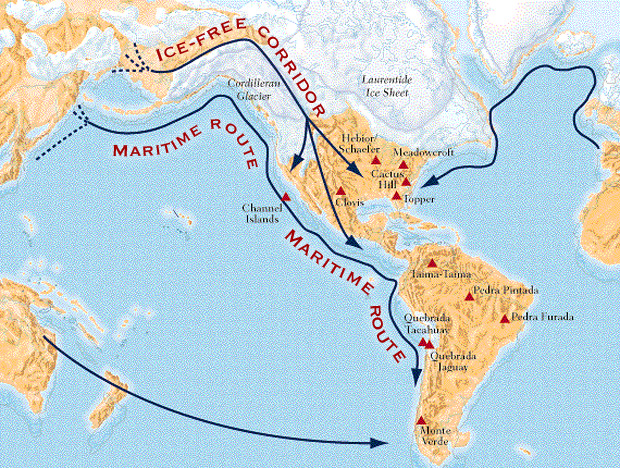

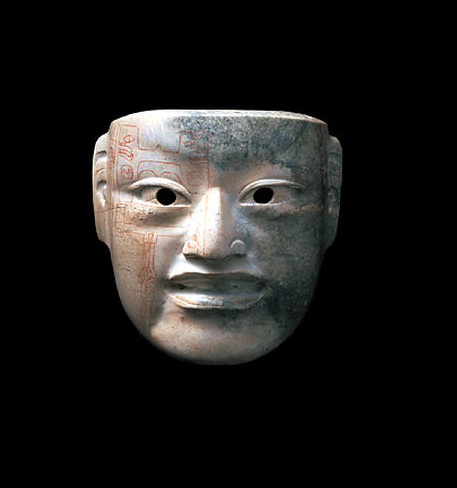
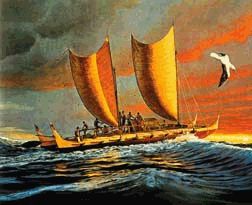
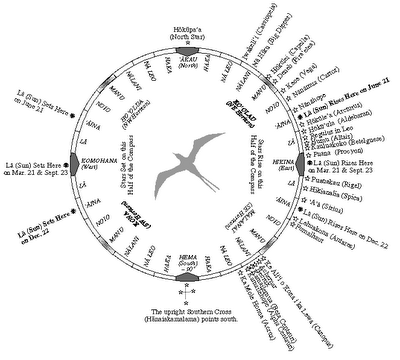
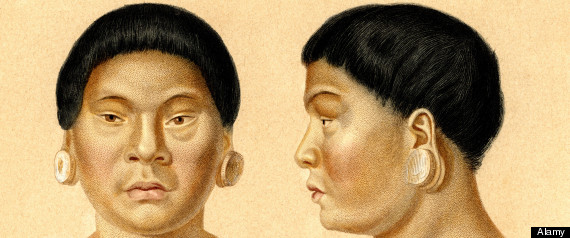 Ancient Polynesian DNA retrieved from some Botocudo skulls in a Brazilian museum seems to indicate the presence of Polynesians in Brazil long before the 13,000 BP land bridge was supposed to have opened up in Alaska. (Drawings of Botocudo man shown)
Ancient Polynesian DNA retrieved from some Botocudo skulls in a Brazilian museum seems to indicate the presence of Polynesians in Brazil long before the 13,000 BP land bridge was supposed to have opened up in Alaska. (Drawings of Botocudo man shown)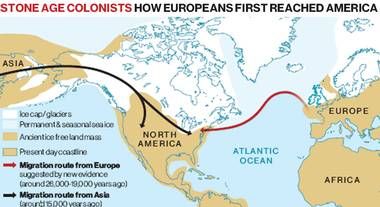



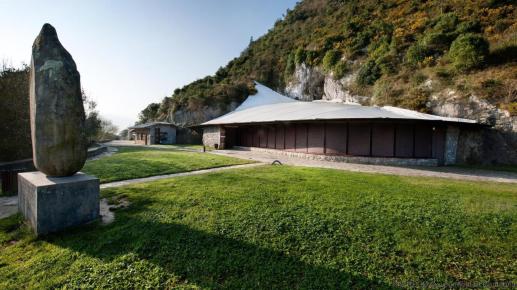
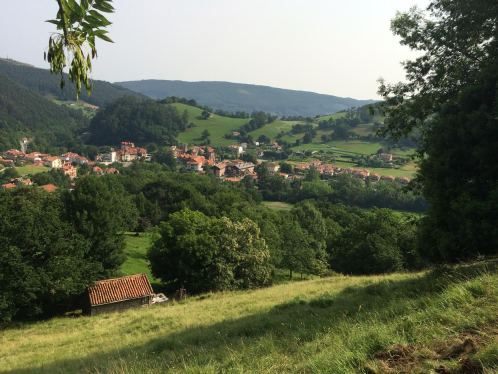
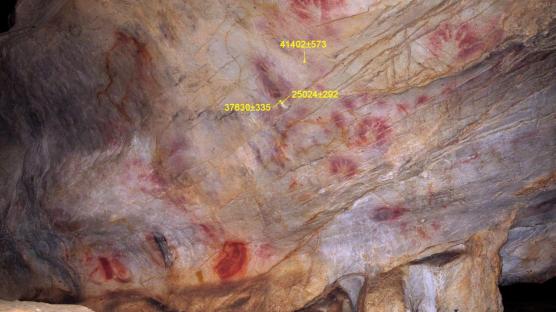
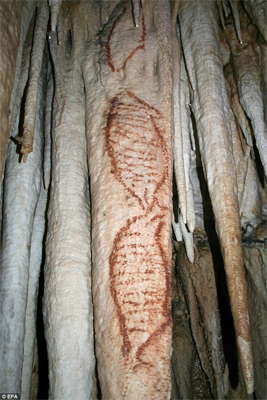
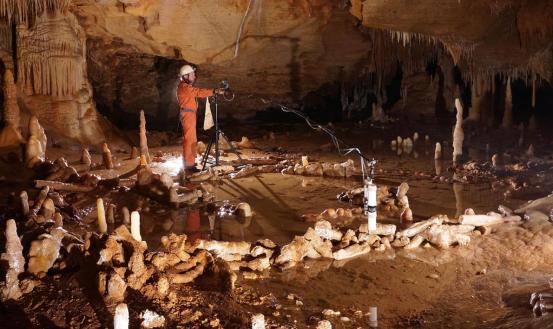

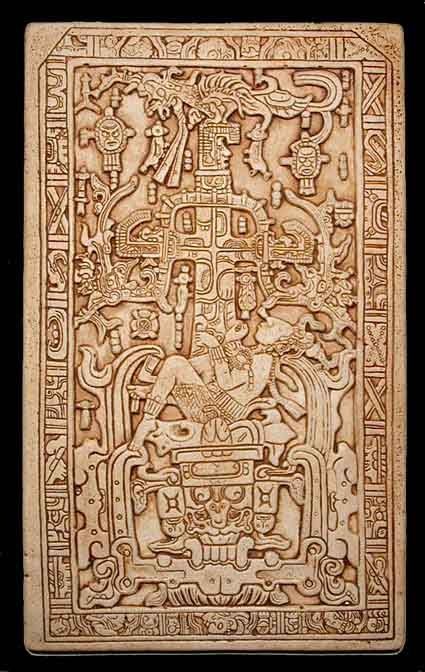




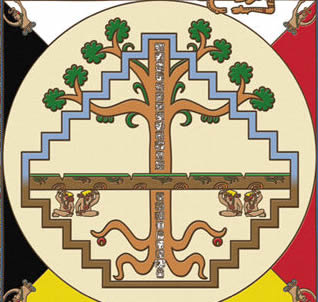
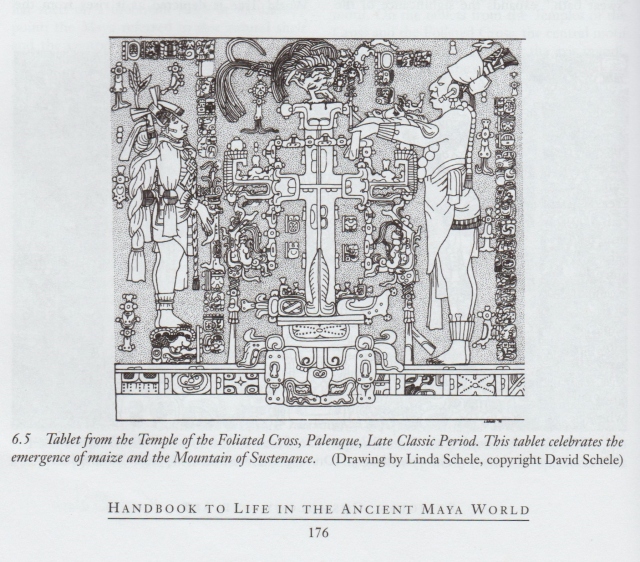
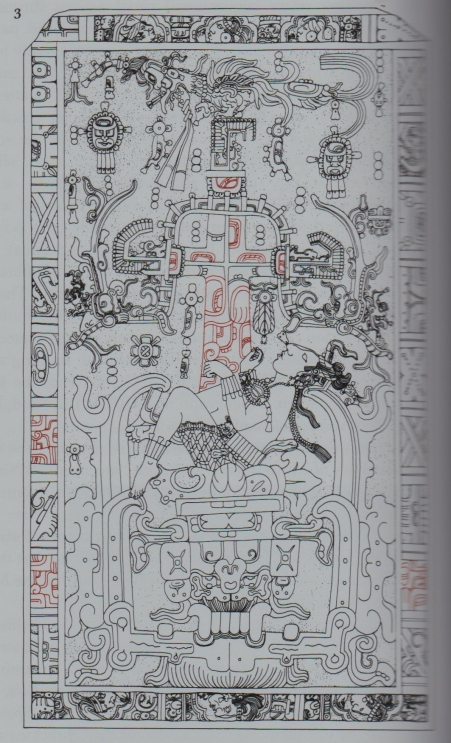
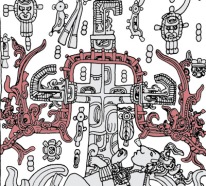
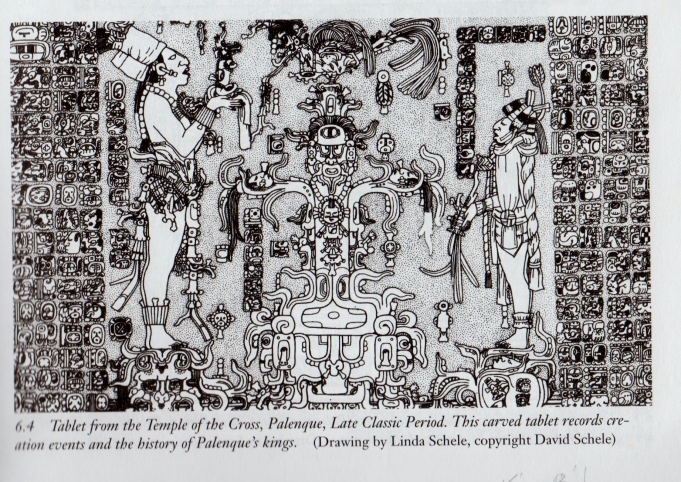
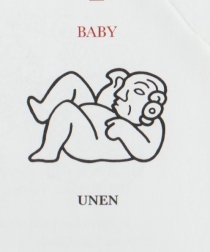


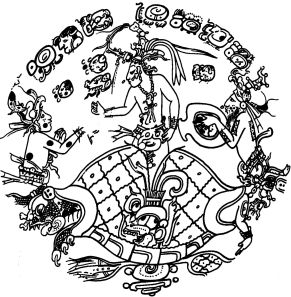



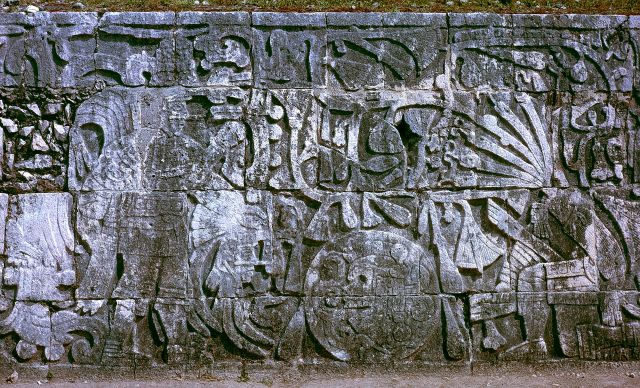


 he nose just as the dying eland is. Again, this shows a sort of ritual sacrifice.
he nose just as the dying eland is. Again, this shows a sort of ritual sacrifice.
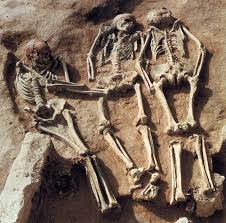

 Take the “Venus” of Gagarino figure, (photo, left) one of several found in the Voronezh region of Russia, in the same region as the Kostenki and Avdeeno sites (22,000 years old), which have also yielded extensive finds of bone awls and points, burnishers, shovels, and jewelry. Gagarino yielded several Venus figures. The one pictured was found buried in a prehistoric fire pit. It has a featureless round head, enormous breasts, and an undefined lower body.
Take the “Venus” of Gagarino figure, (photo, left) one of several found in the Voronezh region of Russia, in the same region as the Kostenki and Avdeeno sites (22,000 years old), which have also yielded extensive finds of bone awls and points, burnishers, shovels, and jewelry. Gagarino yielded several Venus figures. The one pictured was found buried in a prehistoric fire pit. It has a featureless round head, enormous breasts, and an undefined lower body.

 Another possibility is the statue represents a female creation figure who must be destroyed for life to emerge, like the Aztec creation goddess, Coatlicue (She of the Serpent Skirt, pictured, left) and her daughter Coyolxauhqui (pictured below, right, after she was torn apart to create the world).
Another possibility is the statue represents a female creation figure who must be destroyed for life to emerge, like the Aztec creation goddess, Coatlicue (She of the Serpent Skirt, pictured, left) and her daughter Coyolxauhqui (pictured below, right, after she was torn apart to create the world).
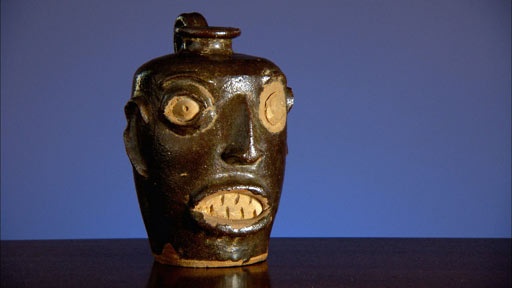

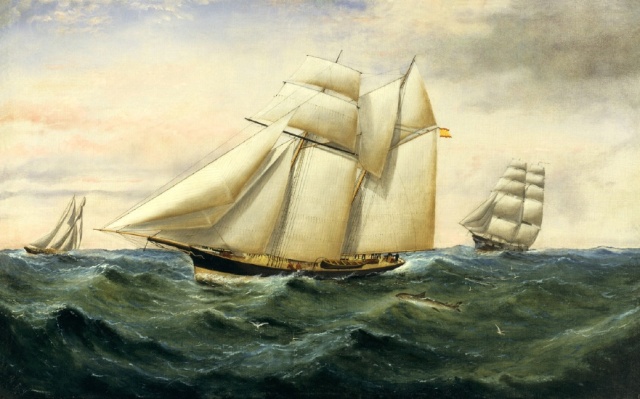
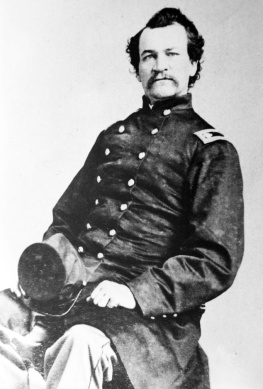 Further, J. Egbert Farnum, (photo, left) who had been a hot-headed, hard-drinking officer on The Wanderer on its infamous 1858 voyage, later regretted his part the affair and headed north after being acquitted. When the Civil War broke out, he signed up with the Northern Army to make amends. He later suffered nineteen bullet wounds and two saber wounds.
Further, J. Egbert Farnum, (photo, left) who had been a hot-headed, hard-drinking officer on The Wanderer on its infamous 1858 voyage, later regretted his part the affair and headed north after being acquitted. When the Civil War broke out, he signed up with the Northern Army to make amends. He later suffered nineteen bullet wounds and two saber wounds.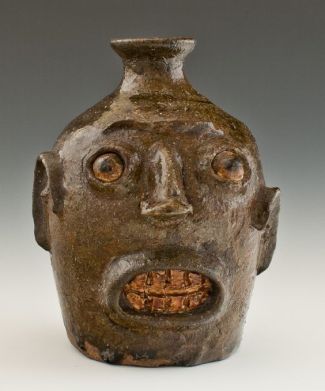
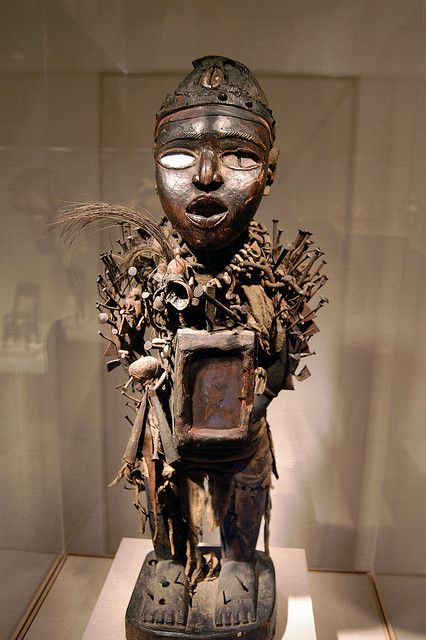 gh which the powers of such spirits are made available to the living. Minkisi typically include clay, stones, or grave dirt. A Nkisi, singular form of Minkisi, power figure from the Congo is pictured, left.)
gh which the powers of such spirits are made available to the living. Minkisi typically include clay, stones, or grave dirt. A Nkisi, singular form of Minkisi, power figure from the Congo is pictured, left.)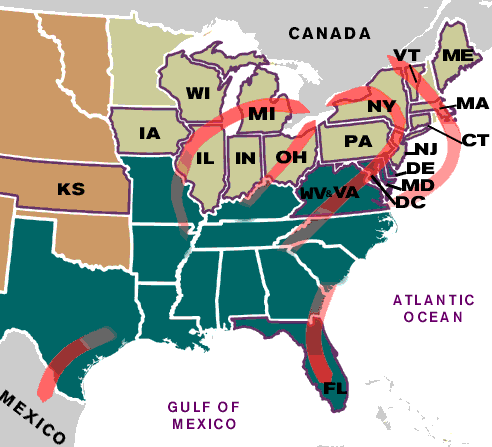
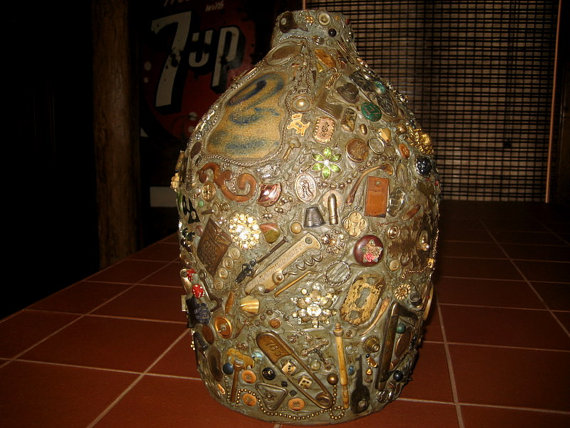
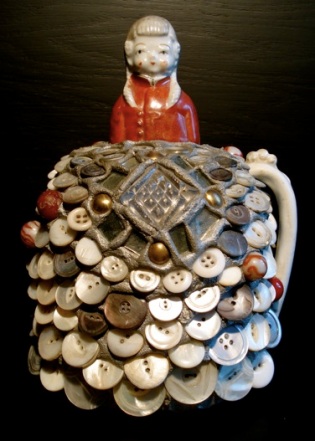
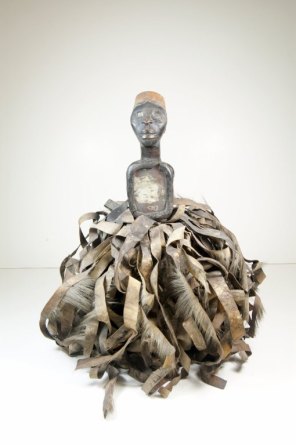
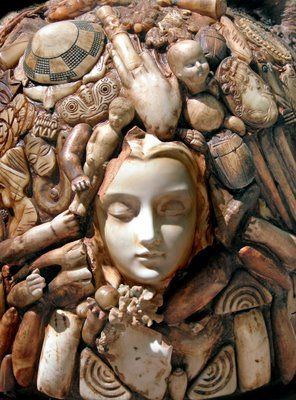

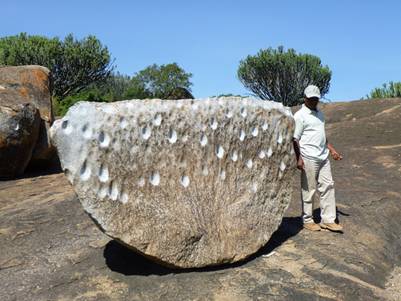
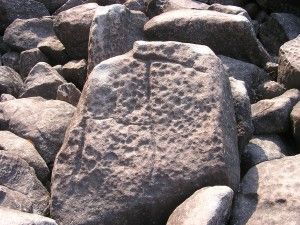
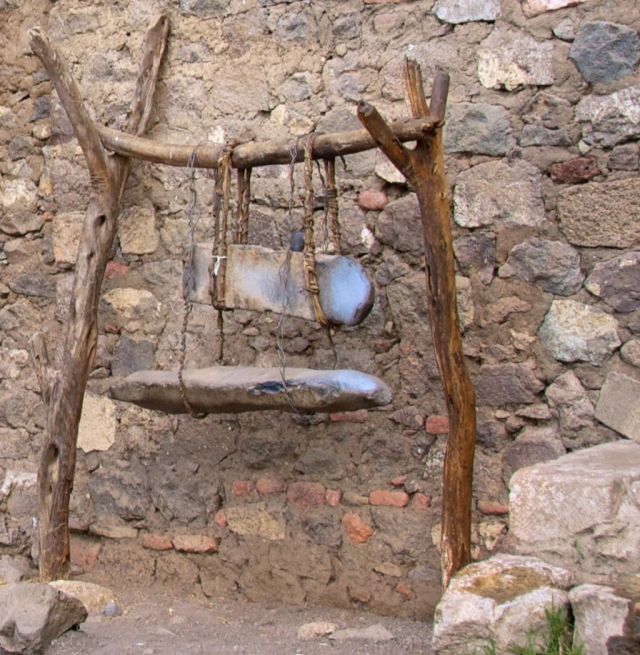
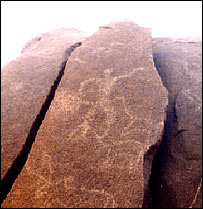 hs decorate ringing rocks. When the rocks are struck near the carvings, the stones emit a loud, musical tone. (See photos, left and below)
hs decorate ringing rocks. When the rocks are struck near the carvings, the stones emit a loud, musical tone. (See photos, left and below)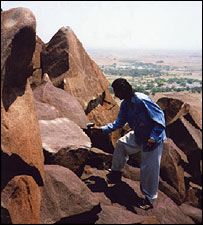

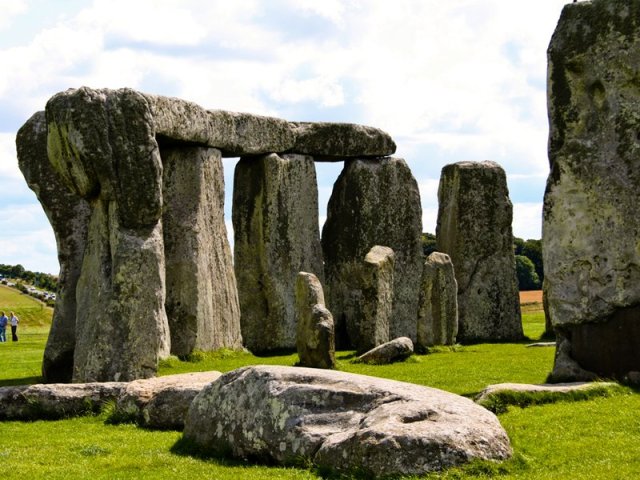
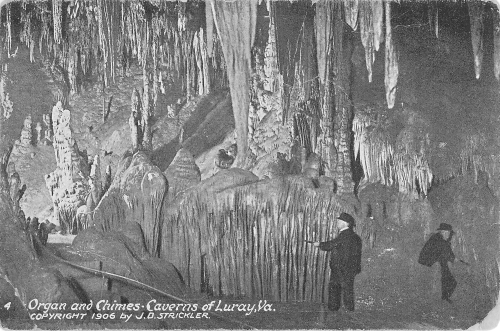

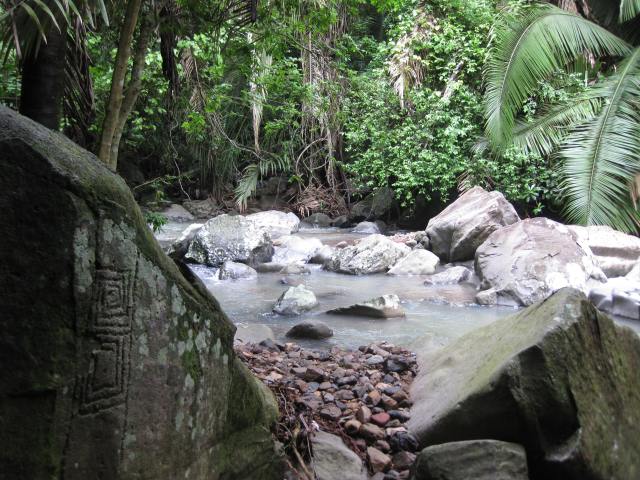
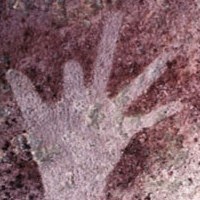






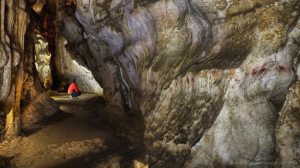
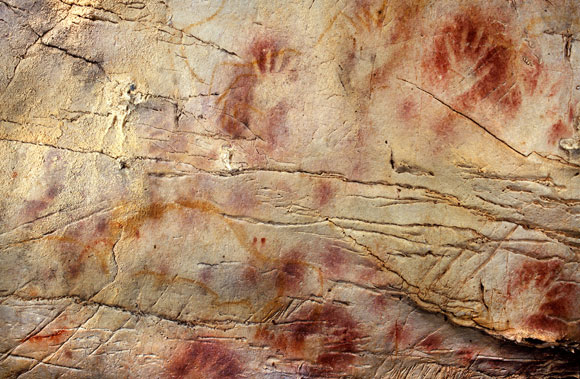
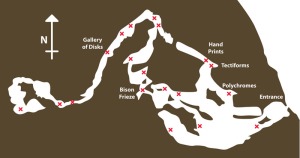
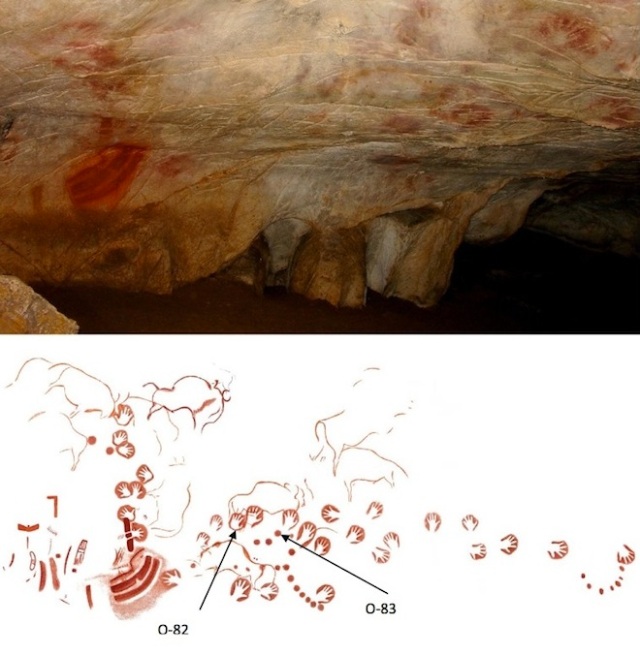
 difficult to master. Archaeologist Paul Pettitt reported that using the two tubes to spray the slurry left them light-headed. Many heard a persistent whirring or whistling noise in their ears. It’s not hard to see how this would have added to the impression of entering a different world.
difficult to master. Archaeologist Paul Pettitt reported that using the two tubes to spray the slurry left them light-headed. Many heard a persistent whirring or whistling noise in their ears. It’s not hard to see how this would have added to the impression of entering a different world.
